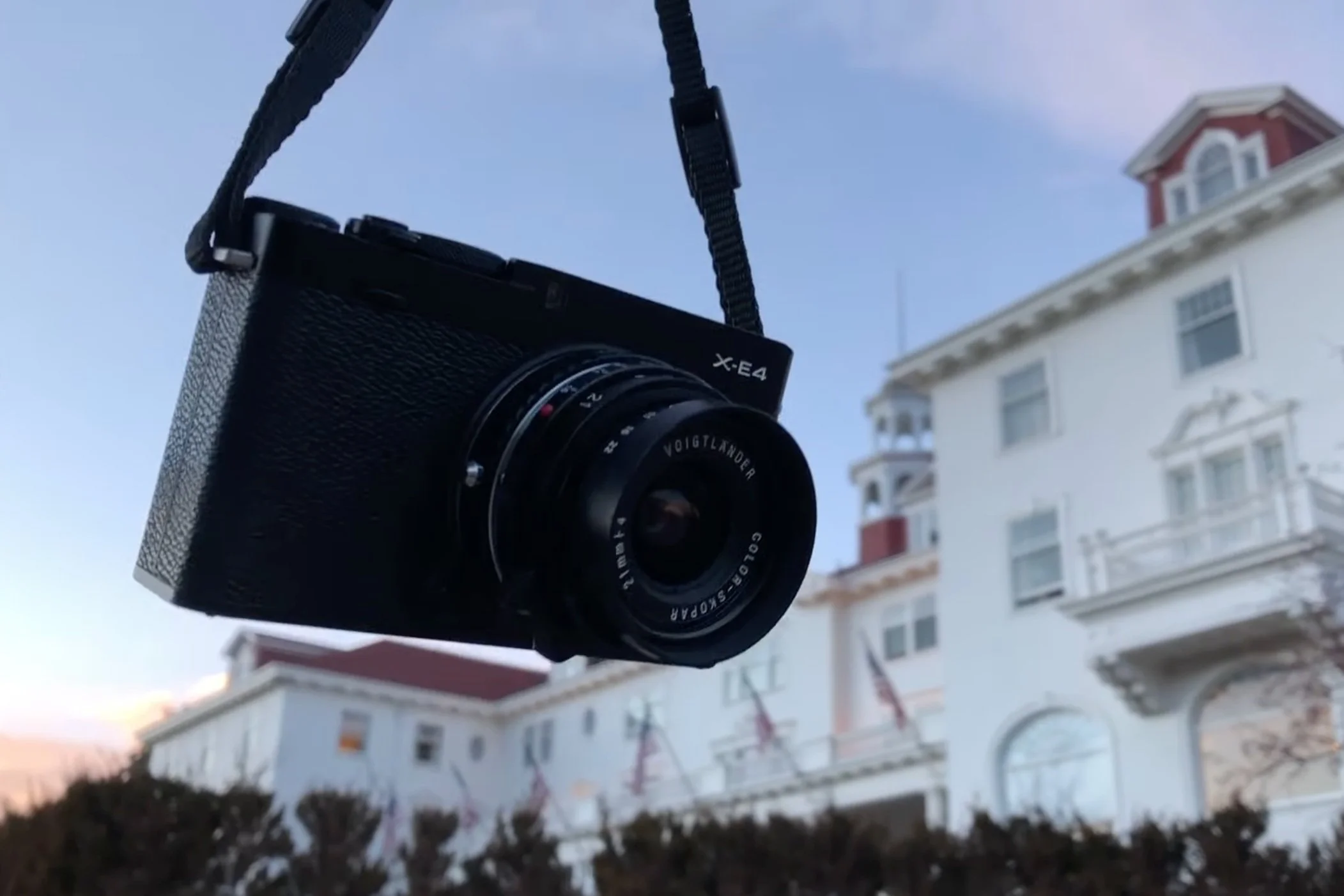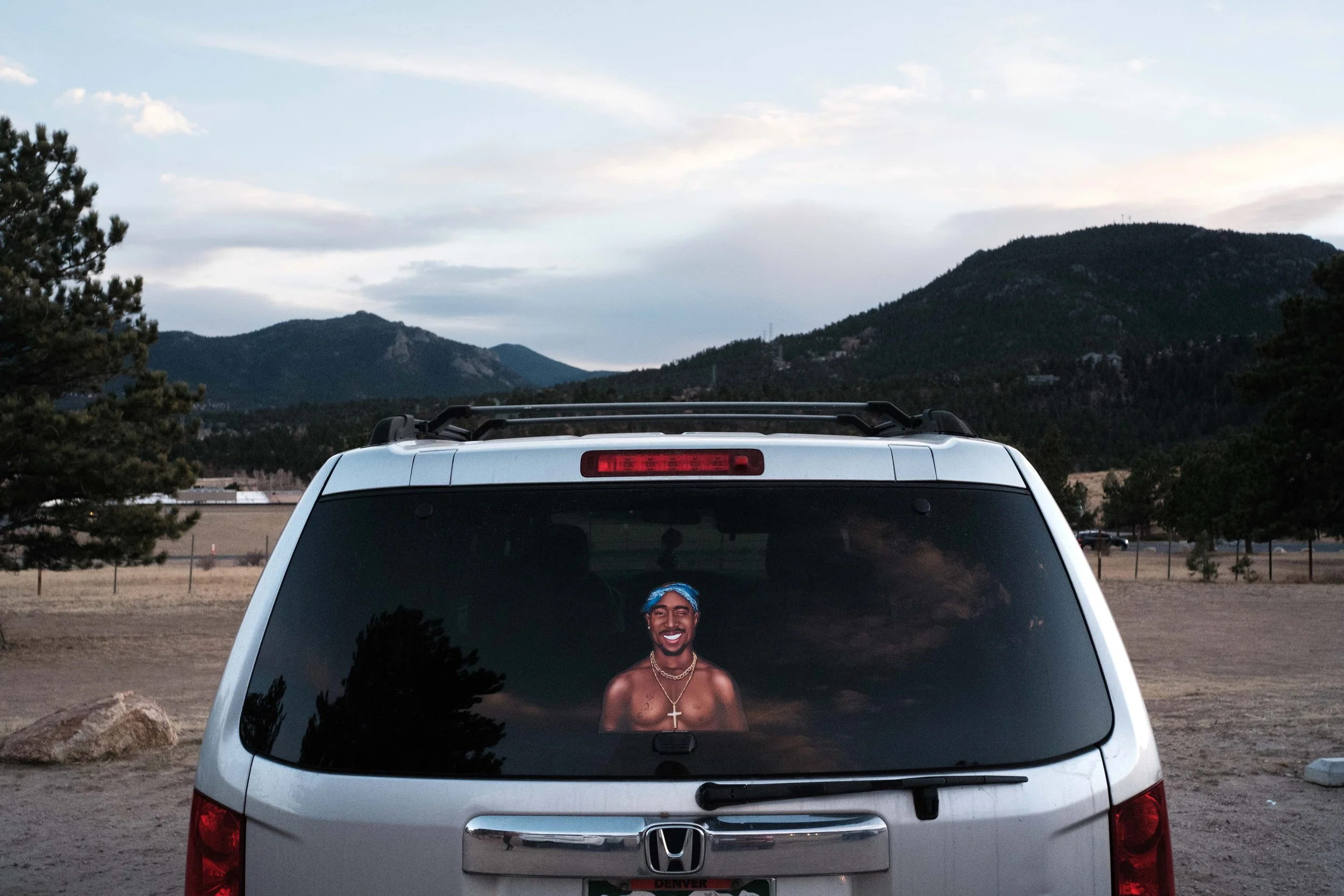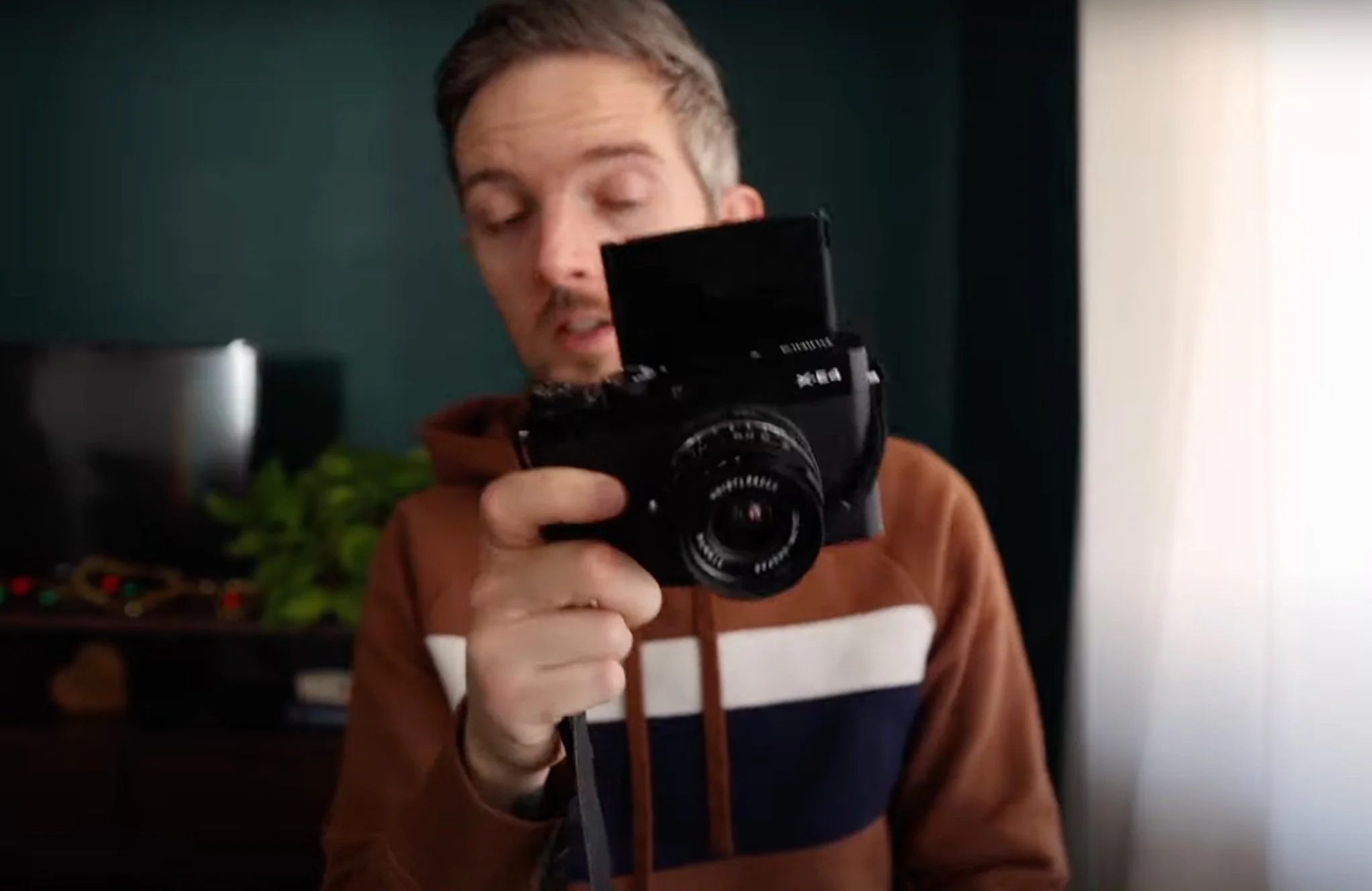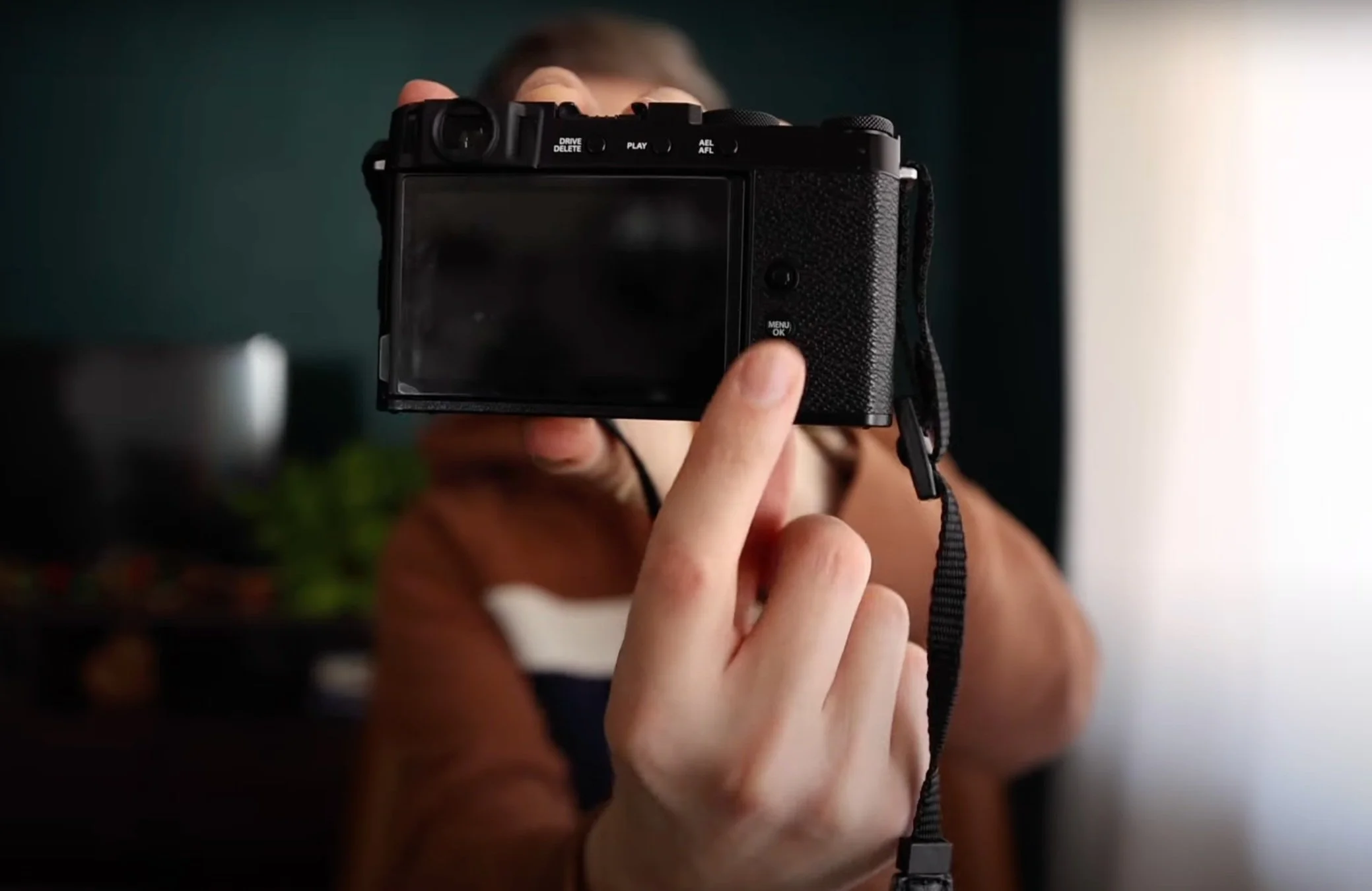Fujifilm X-E4 Review
Ever since the Fujifilm X-E4 was released I wanted to get my hands on one to test out. Even though I was pretty sure I wouldn’t buy one it was a very interesting camera. The X-E4 is fujifilms mid range interchangeable lens, rangefinder-ish style camera. It is a step down from the X-Pro series while still offering the same image quality and output. So it seems perfect for the serious amateur or for a professionals everyday type camera.
I got this camera for a week or so from Lensrentals, if you are interested in trying out an X-E4 or any other camera, follow this link and use the code LIAM15 for 15% off at Lensrentals.
Design & Features
The Fuji X-E line of cameras have always been well respected in the Fuji world but I think the X-E4 is the first one that I’ve seen quite a lot of hype around. It seems to have inherited the clean sharp lines from the X100V and a simplified look from the way the buttons are laid out. There is no D-Pad anymore, there is a joystick and it has the flush LCD design that showed up on the X100V too.
One of the main differences is that it has interchangeable lenses, which is a huge plus for a lot of people. It’s this feature along with its rangefinder styling that has led many to call it a baby X-Pro3 and I’ve also heard it touted as a great alternative to the X100V. It also shares the same 26.1 megapixel X-Trans 4 sensor as the X-pro3 and as far as I am aware the same auto-focus system. It feels the same at least. The X-E4 feels like it focuses faster than the X100V but that is to be expected. The X100 line has always seemed a touch slower than other current Fuji cameras.
Of course the X-E4 has some key points that differentiate it from the other lines. The lack of an OVF being one of the main features that makes it a cheaper option. This isn’t necessarily a bad thing, many users will find they only use the EVF so this can be a cost saving plus.
I have heard a few complaints that the EVF is too small. I didn’t notice that at all and even when I held it up to my eye alongside an X-Pro3 I thought they seemed about the same size, but dont quote me on that, I didn’t verify it for sure. It was more like the eye cup felt smaller.
Fujifilm used to confuse me with their lineup. Everything gets the same sensor and the only things that seem to change are the size, shape, and features of the cameras. So the entry-level cameras have the same image quality as the pro cameras and our job is to figure out what features we need or what would be the point of buying the top model over the entry-level model.
In most situations, the answer is you don’t need the top model camera. A mid or entry-level camera will do everything you need and you don’t have to worry about sacrificing image quality.
On the X-E4 the main features that are removed (that stand out to me) are the OVF, weather sealing, and dual card slots. The last two are features that usually only professionals need. Unless you are a serious amateur who just loves to be out photographing in the rain. With the smaller form factor, you also lose the grip but you gain that nice small minimal look. You can always add a grip if you like.
There is also no IBIS like the X-T4 has. This is another downside for a lot of people these days. From a photography perspective, I am not hugely interested in IBIS but I understand the want for those who use slow shutter speeds regularly. I believe other mid-tier Fuji cameras do have IBIS though.
The 180-degree flip-up screen is a great selling point in my opinion. I shoot horizontally 99.9% of the time and when I’m walking around I don’t like the fully articulating flip-out screens. This flip-up screen has a waist-level viewfinder feel about it that I find enjoyable. But if you are shooting selfies or talking head type videos the fully flipped-up position is great although you couldn’t use a hot shoe microphone as it will obstruct the screen so you’d have to use an off-camera mic instead. But in general, I don’t think anyone will be buying an X-E4 with video in mind.
Size & Ergonomics
When I first took the X-E4 out of the box, I was surprised at how small it is. It’s a bit smaller than the X100V and actually feels comically small in my hand. Because of this small size and minimal design the ergonomics may suffer.
I dont have very big hands so as long as I have a smaller lens it actually feels quite comfortable. I use it with a neck strap or carry it lind of tucked in my hand like a book so the lack of grip doesn’t cause me any issues. But if you carry it dangling like you are holding the grip of a larger camera it’s going to feel like it will slip out of your hand.
But without the grips or thumbrests on the back, they moved the joystick down which moved it out of the way of my thumb so I don’t accidentally move the focus point. That was an issue for me on the X100V. You can lock the button but I never liked the extra step to unlock it.
A positive factor of the smaller size is it feels very maneuverable. It’s quite easy to shoot one-handed and quickly flipping it to the side feels much easier than with other cameras I’ve used. I imagine this is because it is so small and light. I shoot it similarly to how I’d use a Ricoh GR.
Conclusion
In my opinion, the Fujifilm X-E4 is an extremely capable little camera that produces images and video that looks just like any other X-Trans 4 Fujifilm camera. It does all of this in a small and affordable package compared to its bigger siblings. There were no great surprises while using it, it felt familiar, like any other Fujifilm camera. If I was in the market for a small, good-looking, interchangeable-lens camera for street photography or personal work, the Fujifilm X-E4 would certainly be a camera I’d consider. If I was tempted by the X100V I’d be asking myself if I need weather sealing, an optical viewfinder, a built-in flash, an ND filter, and a near-silent shutter. Because if not, the X-E4 might serve me better.






